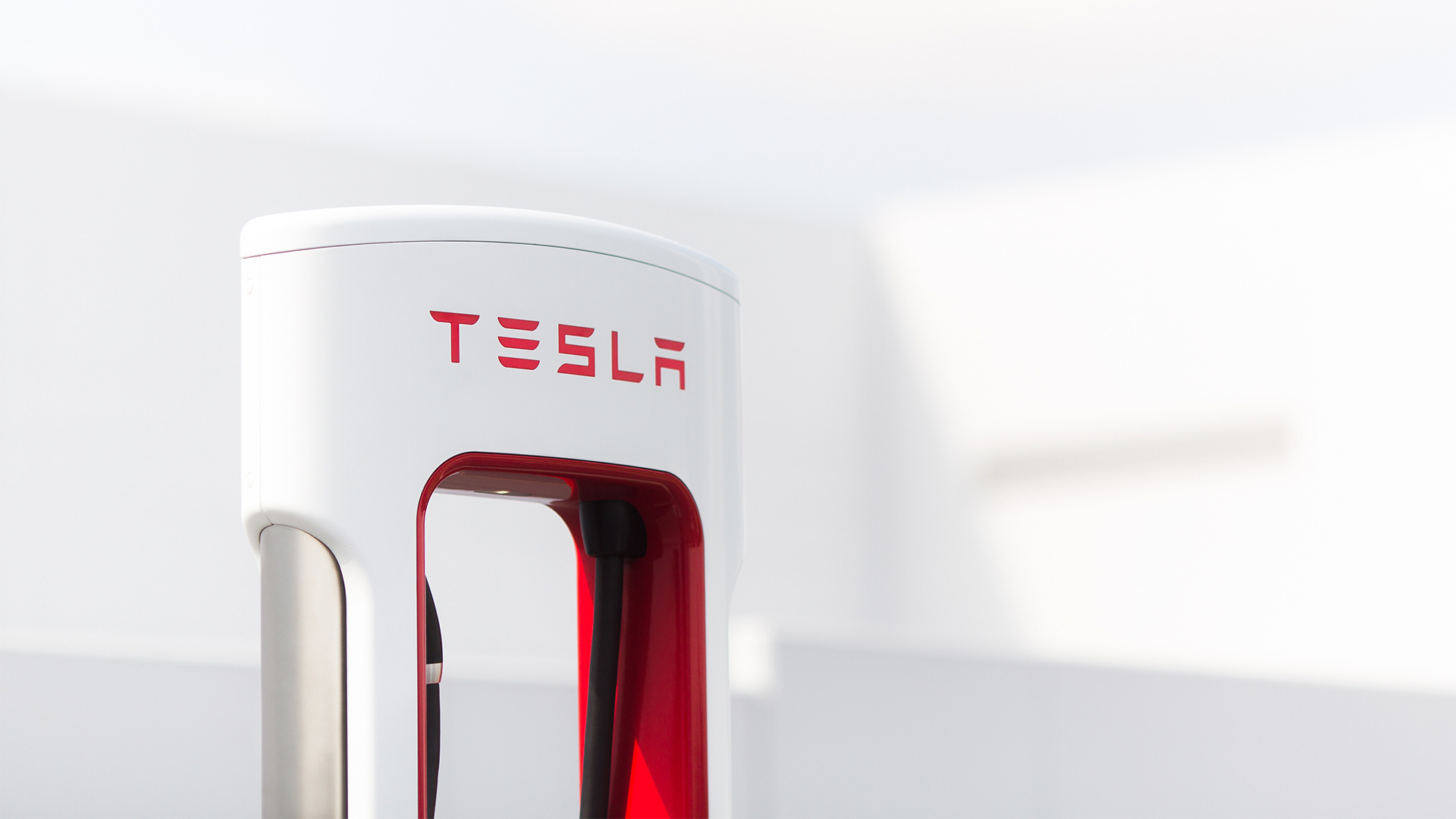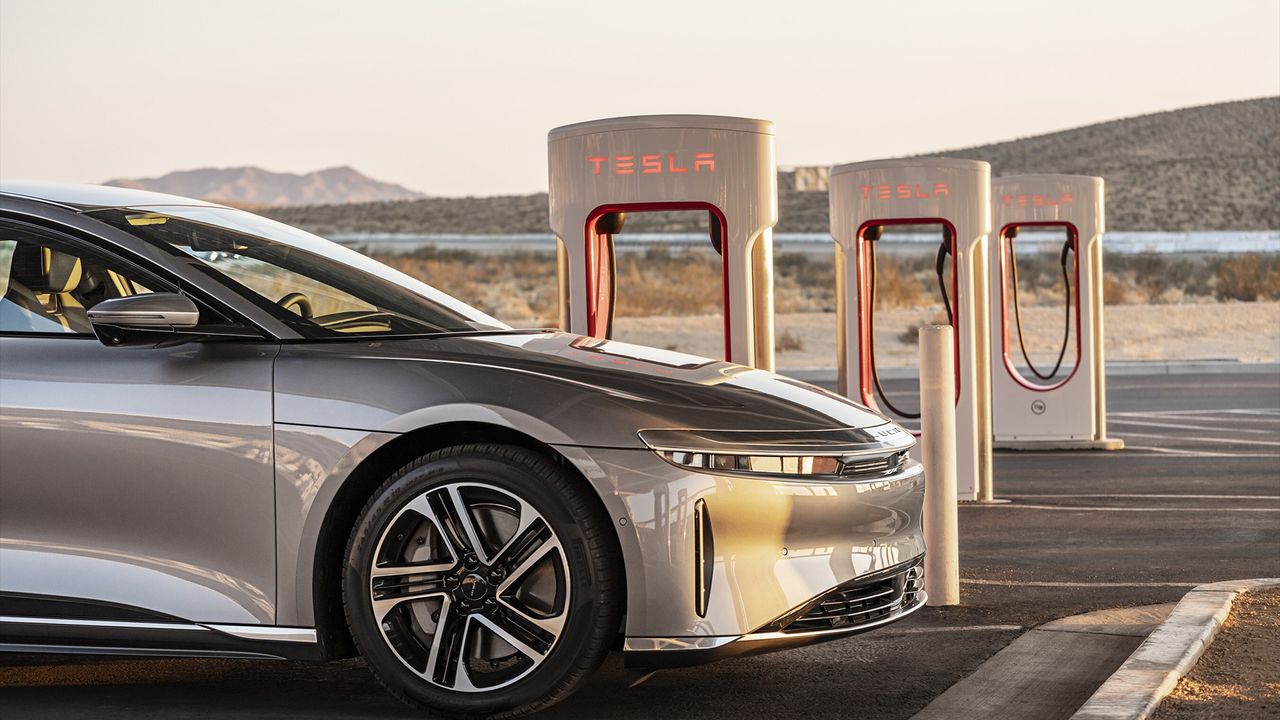- Lucid’s Air model lacks the native NACS charge port of the newer Gravity
- As a result, Lucid now offers an adaptor to customers
- But it comes at a cost and throttles charging speeds
Californian EV manufacturer Lucid has announced that it will offer owners of older Air models the chance to purchase a DC NACS-to-CCS1 adapter that will allow the vehicles to charge from Tesla’s extensive Supercharger network.
The adaptor, which costs $220 excluding taxes, will work with any V3 Supercharger and above, with owners paying for the charge via the Lucid App, with a credit card saved to their Lucid Wallet.
However, due to the high-tech 924V electrical architecture touted by the Lucid Air, which allows it to charge at 300kW or higher for ultra rapid top-ups, the optional adaptor will see charging speeds throttled to just 50kW from Tesla’s 400V charging outlets.
Lucid says this will allow drivers to gain up to 200 miles of range per hour of charging, giving owners “additional peace of mind while on the road”.
While not offering the fastest charging speeds, Tesla owns and operates more than 70,000 Superchargers across the globe, with almost 40,000 ports found dotted around the US, connecting east to west and north to south.
The Lucid Air already offers an impressive amount of all-electric range, but its 2026 Air Touring model will receive a 6% increase, taking the total EPA-estimated range to 431 miles. The remainder of the line-up can tackle a mammoth 512 miles on a single charge.
Analysis: EVs are out-pacing the charging network

Lucid’s optional adaptor might get a handful of owners out of a bind on the longest journeys, but it feels like an additional outlay for not a huge amount of benefit – 50kW charging speeds feel like an antiquity now.
But the issue that many new EV manufacturers are facing boils down to an existing and arguably aging charging network that was designed for 400V electrical architecture.
Porsche got around this with the ability to effectively split the pack of its 800V Macan EV. Although this is an expensive solution that is ultimately passed on to the consumer with high sticker prices.
Similarly, there was uproar when Mercedes-Benz suggested its newest 800V CLA wouldn’t be able to charge at 400V outlets, potentially robbing owners of the ability to plug into the vast array of legacy outlets still in operation.
Mercedes explained at the recent launch that only early models would be affected, stating that it will fit an adaptor to 2026 models that will allow the CLA to effectively charge at lower speeds.
Unfortunately, the global electric vehicle charging infrastructure is struggling to play catch up with the pace of innovation, with vast discrepancies between charging speeds offered in various countries and regions.
Even Tesla, which arguably introduced electric vehicles to the masses, is struggling to roll out its long-promised, next generation 500kW V4 Supercharger network.
